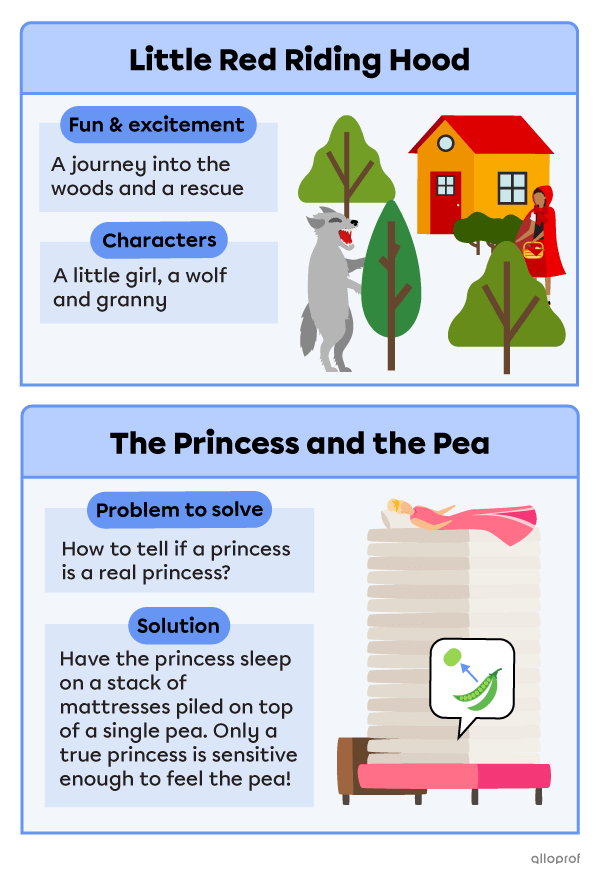Folktales are stories that have been passed down orally over many years, from generation to generation. They are meant to be fun and exciting!
This may sound very similar to fairy tales, because it is. A fairy tale is a type of folktale, a sub-genre.
Here are some of the key features specific to folktales.
Main story elements
• Fun & excitement
• Contain adventure or journeys
• Often involve solving a problem
• Exist in many different versions from all over the world
Characters involved
• Regular and relatable people
• Animals
• Magical creatures & objects
Setting
• Unidentified past: Once upon a time…
• Imaginary often magical worlds
Teachable Moments
• Cultural values & lessons

Story structure
• They all use characters and settings to tell their stories.
• All their plots contain a beginning, a middle and an end.
Oral tradition origins
• People told these stories for a long time before they were written down.
• This is why there are many variations of similar stories found all over the world.
Teach and entertain
• They often contain teaching moments that include cultural values, beliefs, historical facts or traditions.
• They are engaging and very imaginative.

Here are examples of some key features that differentiate myths, legends, fables and folktales.
